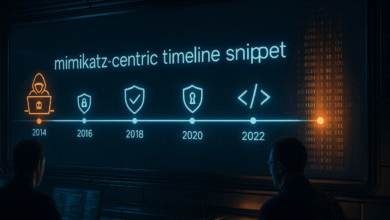galstar 79.1 nonog: A Practical Guide to What It Claims to Be and How to Evaluate It

The phrase galstar 79.1 nonog has appeared across a handful of niche articles and blog posts, and it has attracted curiosity because of the mix of technical-sounding language and ambiguous public information. At first glance, galstar 79.1 nonog is presented as a hybrid digital framework or platform that promises flexibility and cross-domain integration. However, available descriptions are often brief, repeated across sites, and lacking in deep technical detail.
Many of the public mentions treat galstar 79.1 nonog as a concept rather than a fully documented product. That makes it essential for any writer or researcher to separate marketing claims from verifiable facts before publishing a detailed guide or recommendation.
Core claims and positioning around galstar 79.1 nonog
Writers who reference galstar 79.1 nonog tend to highlight a few recurring themes:
- Modularity and scalability as hallmarks of the design.
- Compatibility with different systems and a focus on workflow automation.
- A user-friendly approach that still aims to satisfy technical teams.
Below are concise points that summarize the main claims you will typically encounter when researching galstar 79.1 nonog:
- Intended for organizations that need flexible integration across legacy and modern systems.
- Marketed as useful for analytics, reporting, and process automation.
- Presented as suitable for both smaller teams and larger deployments, depending on the source.
Why the topic matters for businesses and developers
If the claims about galstar 79.1 nonog were supported by clear documentation and case studies, the concept could matter for teams planning migration, integration, or modernization projects. Even in the current state of limited public detail, the conversation around galstar 79.1 nonog raises important practical questions every team should ask when evaluating any emerging platform:
- Does the platform have a transparent architecture and clear integration points?
- Are real-world benchmarks or customer stories available?
- What support, licensing, and training resources exist?
These practical concerns are what turn a speculative buzzword into a workable technology decision.
Use cases that are commonly suggested for galstar 79.1 nonog
Sources that mention galstar 79.1 nonog often suggest several deployment scenarios. Treat the items below as proposed use cases rather than proven implementations:
- Business process automation for repetitive workflows.
- Cross-system data orchestration where multiple applications must share or transform data.
- Analytics pipelines that require predictable, scheduled data processing.
- Academic or research environments looking for modular frameworks to prototype systems.
Key considerations for these use cases include migration complexity, staff training needs, and measurable performance targets.
Practical checklist: How to evaluate galstar 79.1 nonog for your project
When a technology is new or poorly documented, a disciplined evaluation approach protects your time and budget. Use this checklist to vet galstar 79.1 nonog or any similar offering:
- Request official documentation and architecture diagrams.
- Ask for references or named case studies that demonstrate real adoption.
- Verify supported platforms, protocols, and integration methods.
- Run a small pilot that focuses on a high-value, low-risk workflow.
- Evaluate training and operational support options.
- Confirm data security and compliance practices.
These steps help turn speculation into informed decision-making.
Quick evaluation points (handy short list)
- Documentation available? yes / no
- Live customer references? yes / no
- Clear upgrade/migration path? yes / no
- Trial or sandbox environment? yes / no
Technical and operational considerations
Even if galstar 79.1 nonog sounds promising, technical and operational realities determine success. Consider the following before committing to any new platform:
- Integration surface: How does the system connect to databases, message queues, and APIs?
- Data migration: What tools and practices are recommended for moving existing data?
- Observability: Are there built-in logs, metrics, and monitoring hooks?
- Performance: Are there stated limits or published benchmarks for throughput and latency?
- Support model: Who provides updates, patches, and troubleshooting help?
If these answers are missing or vague, treat claims about galstar 79.1 nonog with caution and prioritize due diligence.
Comparing galstar 79.1 nonog style claims with established alternatives
A practical way to understand any emerging concept is to compare its stated strengths with well-known, documented frameworks and platforms. For example, consider how the claimed strengths of galstar 79.1 nonog—modularity, cross-domain integration, ease of use—stack up against established solutions that already publish technical details and case studies. Use the comparison to ask targeted questions:
- Which tasks does galstar 79.1 nonog claim to simplify that current tools do not?
- Are there measurable cost or time savings presented?
- What gap does galstar 79.1 nonog fill that is not well served by existing, documented platforms?
This comparative lens helps you identify whether the value proposition is novel or largely marketing phrasing.
How to write about galstar 79.1 nonog responsibly
If you plan to publish a blog article or guide about galstar 79.1 nonog, follow these principles to be accurate and useful to readers:
- Mark uncertain statements as speculative and avoid definitive claims without proof.
- Provide readers with a clear evaluation checklist so they can test those claims themselves.
- Use real examples from pilots or trials if you or your organization runs one.
- Keep the tone practical: explain what readers can do next rather than simply repeating marketing lines.
A responsible article acts as a decision aid, not as an unquestioning echo of product messaging.
Example structure for your blog post
Use this structure to craft a clear, helpful article about galstar 79.1 nonog:
- Title and brief hook introducing the topic.
- Short summary of what public sources claim.
- List of core features as presented by sources.
- Practical use cases and who might benefit.
- Detailed evaluation checklist readers can apply.
- Comparative notes with familiar platforms.
- Concluding guidance and recommended next steps.
This structure keeps content scannable and useful for both decision-makers and technical readers.
Red flags and things to watch for with galstar 79.1 nonog
Whenever information is sparse or repetitively syndicated across small websites, be alert to these red flags:
- Repetition without original sourcing or named customers.
- Vague terms like “next-generation” without measurable outcomes.
- Lack of verifiable technical documentation.
- No public code repository, sandbox, or demo environment.
If you encounter these patterns while researching galstar 79.1 nonog, treat promotional claims as hypotheses that require testing.
Final recommendations before you test or write further about galstar 79.1 nonog
Before committing to a full article, consider running a quick verification routine:
- Reach out to the sites that mention galstar 79.1 nonog and ask for primary sources.
- Search for any repository, whitepaper, or demo linked to the name.
- If possible, run a pilot or ask for a sandbox to validate claims.
These steps will give you the material you need to move from a descriptive piece into a practical, authoritative article.
Conclusion
galstar 79.1 nonog is an intriguing name in a handful of online mentions, presented as a flexible framework for integration and automation. At present, public information is limited and often repetitive, so any writer or evaluator should rely on careful verification: request documentation, confirm case studies, and run pilots where possible. Use the evaluation checklist and the suggested article structure above to turn curiosity about galstar 79.1 nonog into clear, useful content that helps readers make informed decisions.
FAQs: galstar 79.1 nonog
Q1: What is galstar 79.1 nonog?
A: galstar 79.1 nonog is described as a hybrid digital framework designed for workflow automation, data integration, and modular business solutions. Its public information is limited, but it is claimed to offer flexibility and scalability for different organizational needs.
Q2: Who can benefit from using galstar 79.1 nonog?
A: Organizations of all sizes—from small teams to enterprises—can explore galstar 79.1 nonog for business process automation, cross-system integration, and analytics workflows. Researchers and academic teams may also find it useful for modular prototyping.
Q3: Are there real-world case studies for galstar 79.1 nonog?
A: Currently, verifiable case studies are limited. Most information comes from niche blogs and mentions online, so evaluation through pilots or testing is recommended before adoption.
Q4: What are the key features of galstar 79.1 nonog?
A: Key features often cited include modular architecture, cross-domain integration, compatibility with multiple systems, scalability, and user-friendly design aimed at both technical and non-technical users.
Q5: What challenges might users face with galstar 79.1 nonog?
A: Users may encounter challenges such as integration complexity, migration from legacy systems, lack of detailed documentation, and adoption resistance among teams.



